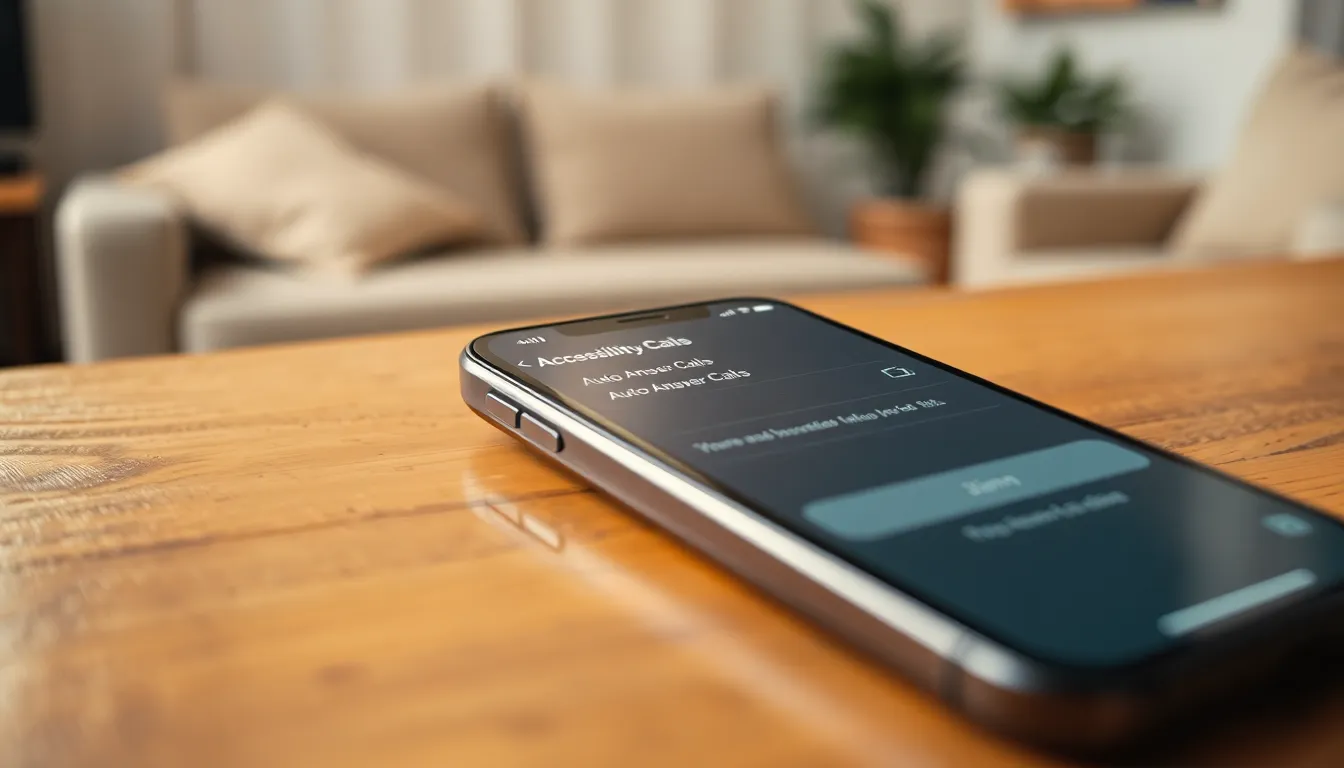Table of Contents
ToggleEver had that moment when your iPhone decides to answer a call without your permission? It’s like your phone’s auditioning for a role in a sitcom, but you’re not laughing. Instead of a smooth conversation, you might end up talking to yourself or having an awkward chat with a telemarketer.
Understanding Automatic Call Answering
Automatic call answering on an iPhone activates when specific settings enable it. This feature can lead to unexpected situations, such as answering calls without user interaction.
What Is Automatic Call Answering?
Automatic call answering allows an iPhone to respond to incoming calls without manual intervention. This function targets individuals who face accessibility challenges. Options like this enhance the user experience by providing convenience in specific situations. Setting this feature can occur through Accessibility settings, making it easier for users to manage incoming calls efficiently.
How It Works on iPhones
iPhones utilize a feature called “Auto Answer Calls” within the Accessibility settings. Users can customize the duration before the call gets answered, allowing flexibility in responsiveness. When activated, an incoming call answers automatically based on the designated time. This setting remains beneficial for hands-free situations or scenarios requiring users to maintain focus. Accessing this feature enables users to streamline their call management process effectively.
Common Reasons for Automatic Call Answering

Unexpected automatic call answering on an iPhone may stem from several factors. Understanding these reasons helps users manage their devices effectively.
Accessibility Features
Accessibility features significantly enhance user interaction with devices. The “Auto Answer Calls” setting allows those with disabilities to receive calls without manual effort. Depending on user needs, this feature can be customized to answer calls immediately or after a delay. Customization provides flexibility and ensures convenience in various situations. Users can find this option in the Accessibility section under Touch settings.
Software Settings
Software settings play a pivotal role in automatic call answering. Users might enable the “Auto Answer Calls” feature unintentionally through adjustments in accessibility settings. Some iPhones can also have features like Do Not Disturb or focus modes that interact with other settings. Adjusting these features can help prevent unexpected answering. Regularly checking the settings may provide additional solutions to control call management.
Hardware Issues
Hardware issues can also trigger auto-answering calls. Potential defects in the device, such as faulty buttons or malfunctioning microphones, might result in unintended behavior. In some cases, accidental presses during an incoming call can activate answering. Users should inspect their devices for physical damage and functionality. If problems persist, seeking professional repair services can resolve these issues.
Troubleshooting Automatic Call Answering
Automatic call answering can be frustrating. Several steps help resolve this issue effectively.
Checking Accessibility Settings
Reviewing accessibility settings is essential. Navigate to Settings, then select Accessibility. Locate the “Touch” option to find Auto Answer Calls. Users often enable this option without realizing it. Disabling Auto Answer Calls stops the phone from answering calls automatically.
Adjusting Call Settings
Adjusting call settings may prevent unexpected call responses. Access the Phone section from Settings. Check if Do Not Disturb is on; this feature can lead to unintentional call answering. Changing the settings for incoming calls can significantly improve call management. Ensuring that Silence Unknown Callers is disabled also helps avoid issues with unexpected calls.
Restarting Your iPhone
Restarting the iPhone might solve the problem. Holding down the side button and either volume button prompts a slider to appear. Sliding to power off resets the device’s temporary functions, often fixing glitches. Once the iPhone powers back on, the call answering issue may disappear. Regular restarts maintain overall device performance.
Tips to Prevent Automatic Call Answering
To stop the iPhone from automatically answering calls, users can take several specific steps.
Disabling Features
Begin by disabling features that might contribute to automatic answering. Navigate to Settings and tap Accessibility. In this menu, locate Touch and disable the Auto Answer Calls option. Users can also assess their Do Not Disturb settings, ensuring that any automatic responses aren’t activated. If using any third-party call management apps, check their settings too, as these may interfere with call response functions.
Regular Software Updates
Ensure the iPhone software remains up to date for optimal performance. Go to Settings and select General, then tap Software Update. Regular updates often include bug fixes and performance enhancements that address issues related to automatic call answering. Keeping the iPhone running the latest version of iOS can reduce the chance of experiencing unintentional call responses. Frequent checks for updates also maintain the overall health of the device, preventing glitches from becoming persistent problems.
Automatic call answering on an iPhone can be both a helpful feature and a source of frustration. While it’s designed to assist users with accessibility needs, it can lead to unexpected conversations and awkward moments. By understanding the settings and potential causes behind this feature, users can take control of their call management. Regularly checking accessibility settings, adjusting call preferences, and keeping the device updated are key steps in preventing unintended call answering. With a few adjustments, users can enjoy a smoother phone experience and avoid those unexpected moments of talking to themselves.







